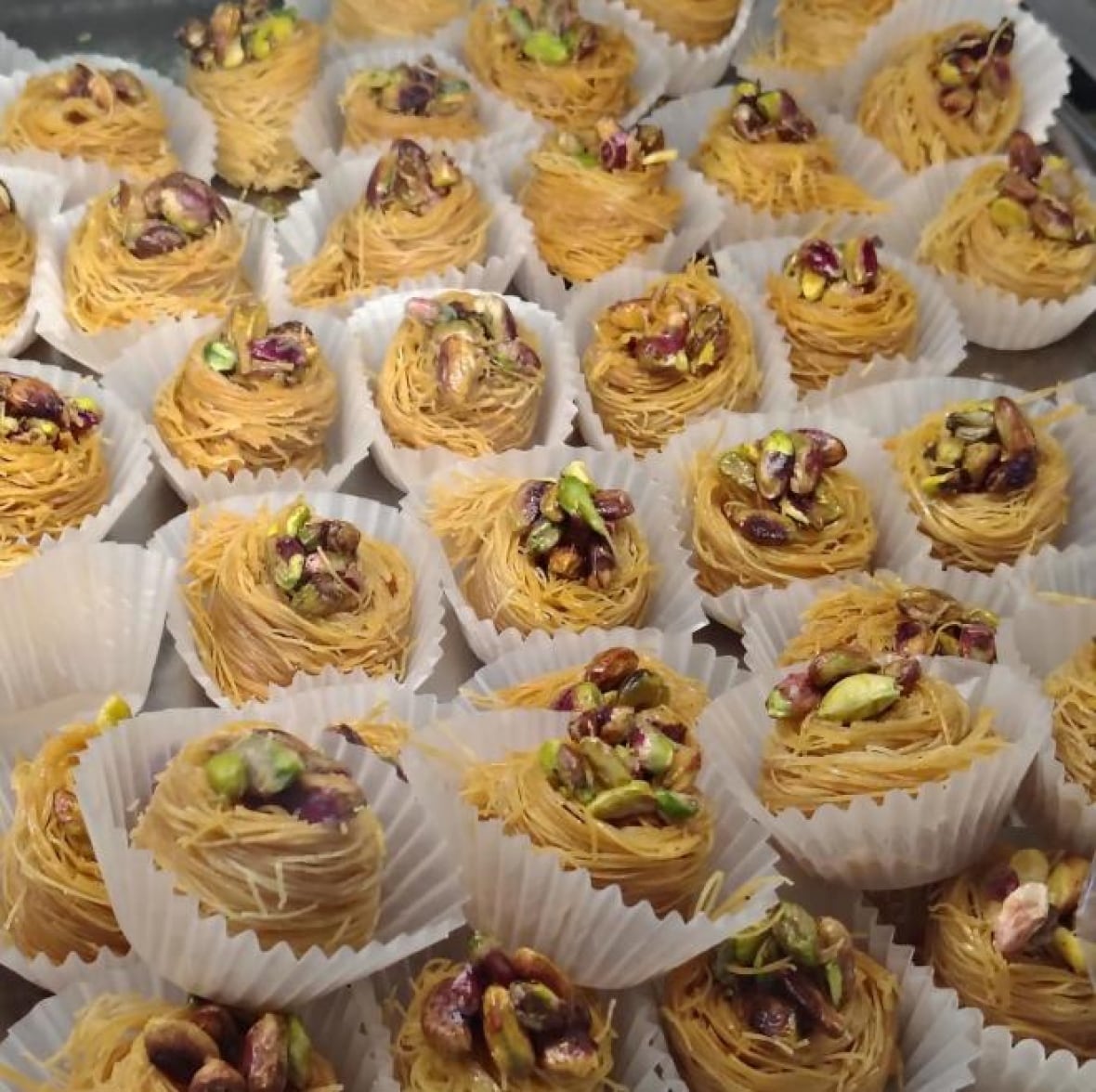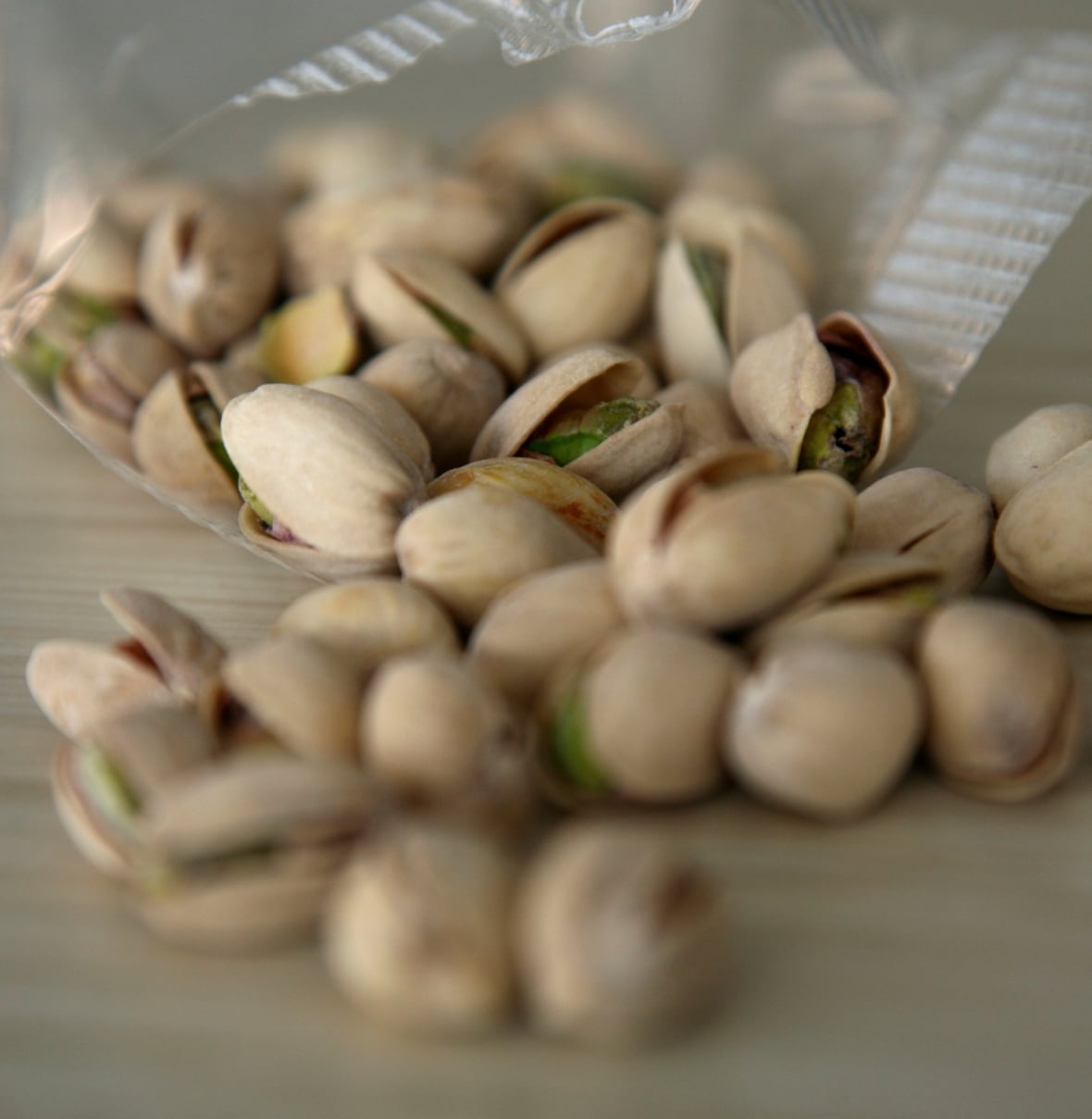More brands of TikTok-famous chocolates with pistachios have been recalled over salmonella concerns. Here why food scientists say the nuts can be prime suspects for causing outbreaks of foodborne illness.
On Thursday, the Canadian Food Inspection Agency said more types of Dubai pistachio and knafeh milk chocolate have been recalled, following earlier recalls of Habibi brand of pistachios or deserts like baklava containing the nuts. People should not eat, serve or cook with any of the affected brands.
The Dubai chocolate craze for milk chocolate bars filled with a pistachio cream and crunchy pieces of knafeh was fanned by food bloggers. But recalled pistachios and pistachio-containing products are now linked to 52 illnesses between early March and mid July, including 10 hospitalizations across Canada.
“We know that cases in the outbreak have the same genetic fingerprint in the strain of salmonella that made them sick, and this same strain has been found in the Habibi pistachio brand,” said Anne Marie Lowe, outbreak manager at the Public Health Agency of Canada in Montreal.
What caused this outbreak isn’t yet known and may stay a mystery, food scientists say. But because the nuts have a long shelf life, it may not be over soon.
Pistachios shaken from tree
Salmonella infection is a food-borne bacterial illness that may cause fever, headache, vomiting, nausea, cramps and diarrhea. It’s caused when fecal material from infected humans or animals gets into our mouths, such as by consuming contaminated food or drink.
The bacteria live in the intestines of many animals and common sources include undercooked poultry and other meats, undercooked eggs and unpasteurized milk.
For pistachios and foods containing the nuts, contamination can happen before or during harvest as well as processing, said Lawrence Goodridge, who holds a Canada Research Chair in foodborne pathogens.
Pistachios grow on trees and before harvest, birds and insects can introduce salmonella to the nuts, he said. Contaminated irrigation water is another possibility.
To harvest pistachios, the trees are typically shaken, including with mechanical equipment. The nuts fall onto trays that can be contaminated in the orchard, Goodridge said.
Salmonella in chocolate resists stomach acid
While cooking contaminated chicken or eggs kills salmonella, some pistachios in products are raw, and even cooking the nuts may not do the trick.
“One of the issues with salmonella is it survives very well in dry foods,” Goodridge said. “It may not grow, but it will survive for very long periods and that’s why we’ve seen outbreaks in dry foods like pistachio nuts and almonds, chocolate and flour.”
Microbiologist Keith Warriner, a professor specializing in food safety at the University of Guelph, said some salmonella subtypes, such as the Havana serotype implicated in this outbreak, can persist in soil.
“An additional factor is that when incorporated into chocolate, the salmonella can survive the stomach acid so relatively low doses are required to cause illness,” Warriner said.

In this outbreak, the pistachios were imported. Goodridge said investigators typically look at who imported the foods and their records to ensure the ingredients or foods were produced to the same standards as in Canada.
Boutique or artisanal products aren’t more or less safe in and of themselves, Goodridge said.
“One thing that consistently has occurred in outbreaks … is that oftentimes there’s a breakdown in terms of the food safety programs that should have been followed,” he said, pointing to last year’s plant-based milk recall and Listeriosis outbreak that killed three people.
Another factor that could extend this salmonella outbreak is that if pistachios are dried, the shelf life can be up to two years, depending on how they’re stored, Goodridge said.
Canada has seen several recent food recalls over concerns about salmonella and E. coli, from carrots to cucumbers to kale. While that may sound alarming, experts say recalls indicate the safety system is working as it should.
The outbreak investigation continues, Lowe said, and other affected food products could be identified. The delay between when a person becomes sick and goes to the hospital to get tested and the time when the case gets reported to public health is another factor in extending outbreaks, she said.
Warriner has an eye on preventing salmonella illnesses. Since salmonella persists under dry conditions and pistachios are dried after harvest, he said, thermal treatments may not work. He’s working on a way to pasteurize nuts that doesn’t involve heat.









